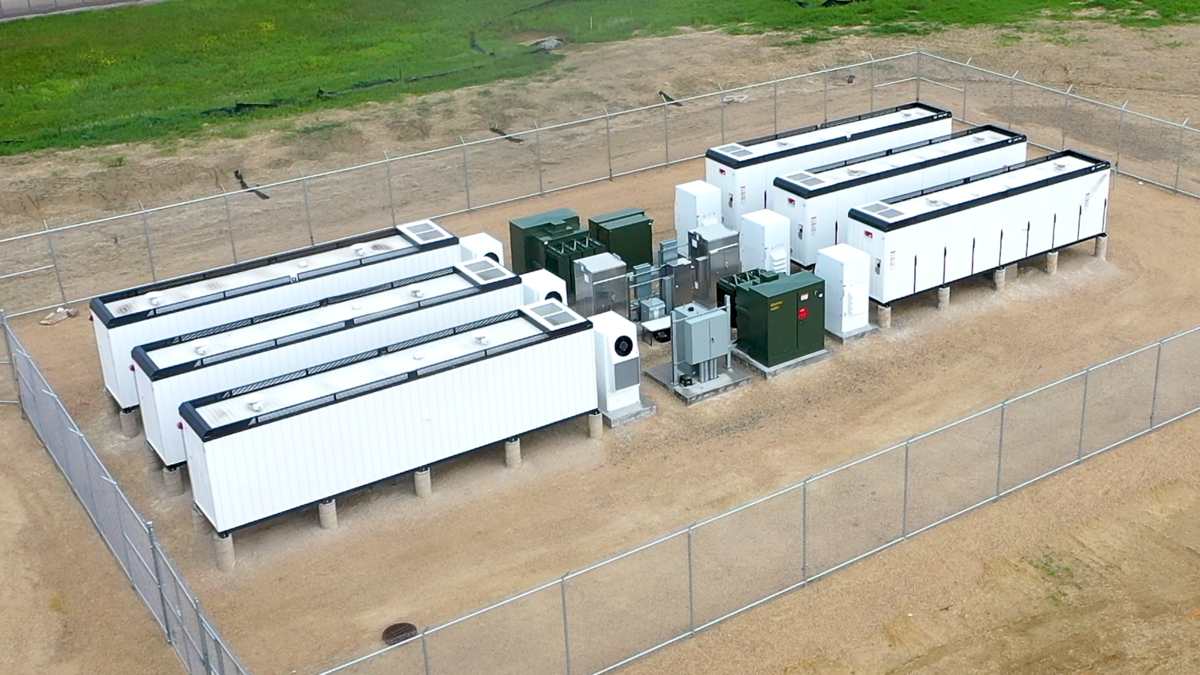Renewable energy generation in the United States achieved a remarkable milestone in 2022 when it officially surpassed coal generation. However, a critical question emerges – what do we do with excess energy when it’s not needed by customers? Energy storage systems offer a solution. When excess renewable energy is produced by the sun or wind, and when energy demand is low, storage systems such as utility-scale battery units can charge from solar, wind or other generation resources and then release energy when needed.
Despite the steady increase in battery projects across the US, there are many myths out there about these energy storage systems. Understanding the potential of energy storage can help us improve the reliability of the grid and continue advancing clean energy for a brighter future.
Let's debunk some common myths about batteries.
Myth: Batteries are unreliable.
While you might wonder about the reliability of batteries, the systems provide a stable and controllable source of energy. The energy storage systems we are developing utilize lithium iron phosphate (LFP) battery cells. LFP batteries demonstrate a high level of reliability and a long service life in various applications — including in electric vehicles.
Batteries can also improve reliability and strengthen the energy distribution system. Our Boaz Microgrid project, the first of its kind in Wisconsin, is designed to supply backup battery power for the entire village in the event of an outage or service disruption.
Myth: Batteries are dangerous.
Some worry that large-scale battery systems are hazardous; however, the LFP batteries we deploy are completely sealed and do not hold any toxic heavy metals, such as mercury, cadmium or lead.
To protect surrounding communities, our employees, and the environment, we use on-site sensors and off-site monitoring to ensure our battery units are safe. First responders and local officials also receive special training to ensure proper site safety and response planning in the rare case of an emergency.
Myth: Batteries are not practical for utility-scale application.
Energy storage technology might seem complex, however, batteries are proven to be practical in both small- and large-scale applications. The size and capacity of the systems can be scaled to power anything from a single home to an entire community.
Batteries also optimize the way energy is delivered and help complement the transition to clean energy sources. Renewable energy sources like wind and sun vary in their output based on the weather, but batteries improve grid stability by storing the excess energy and releasing it when needed, thereby balancing the available supply with the demand.
The rise of renewable energy generation has opened new opportunities for energy storage technologies like batteries. The systems are a safe, reliable and practical way to accelerate the transition to a cleaner and more sustainable energy future. To learn more about our battery investments, go to alliantenergy.com/battery.

Myths about battery energy storage systems

Kaitlyn Koester
External Communications Intern
Published on April 25, 2023
Kaitlyn is an intern with the External Communications Team. She is a student at The University of Iowa, studying Journalism & Mass Communication and Event Management. Kaitlyn is passionate about sustainability and is eager to help tell Alliant Energy’s story in their journey to create a better future.
Recent Stories
Alliant Energy builds a stronger community with Habitat for Humanity
Our company contributes to Habitat for Humanity in many ways including recent building events with Wisconsin’s Habitat for Humanity of Dane County (HHDC) and Iowa’s Cedar Valley Habitat for Humanity (CVHH).
Read More
Industrial food grade building available in Fort Madison, Iowa
A location now available and potentially eligible for an incentive power rate is a site formerly used to manufacture metal cans for the food industry.
Read More
For Alliant Energy VIP Shannon Self, volunteering takes center stage
Shannon Self is constantly lending a helping hand in her community.
Read More
